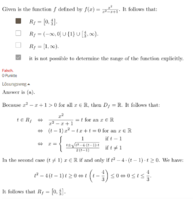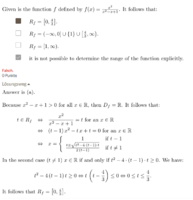Hi everyone
It's about the equation below. I want to find the range of the function, but I don't know how. The shown solution is way to complicated for me, so if anyone could explain or show a easiert method, that would be much appreciated.
I know that x^2-x+1 can't be zero for all x and that therefore the domain is not limited
Thank you

It's about the equation below. I want to find the range of the function, but I don't know how. The shown solution is way to complicated for me, so if anyone could explain or show a easiert method, that would be much appreciated.
I know that x^2-x+1 can't be zero for all x and that therefore the domain is not limited
Thank you


